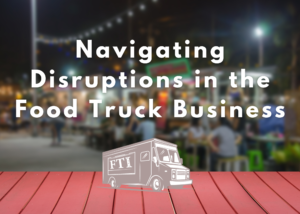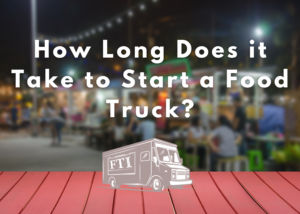
Navigating Disruptions in the Food Truck Business: Strategies for Success
The food truck industry has seen rapid growth in recent years. Offering convenience, unique menu options, and a sense of local community, food trucks have

Food trucks have revolutionized the culinary landscape, offering mobility, convenience, and diverse menu options to food enthusiasts everywhere. Central to the success of any food truck venture is the selection of equipment that meets operational needs, maximizes efficiency, and ensures food quality on the go. In this comprehensive guide, we explore the potential equipment options for food trucks, with a focus on the feasibility and considerations of onboard ovens.
1. Understanding Food Truck Equipment Needs
Space Constraints and Mobility
One of the primary considerations when outfitting a food truck is the limited space available for equipment. Food trucks must maximize every square inch of interior space to accommodate cooking appliances, refrigeration units, storage compartments, and work surfaces while maintaining sufficient room for staff to maneuver efficiently.
Power Requirements
Food trucks rely on power sources such as generators, propane tanks, or electrical hookups to operate kitchen equipment. Choosing energy-efficient appliances and managing power consumption effectively are critical for optimizing operational costs and ensuring consistent performance throughout service hours.
Health and Safety Compliance
Food trucks must adhere to health and safety regulations specific to mobile food vendors, including food handling practices, sanitation standards, fire safety, and ventilation requirements. Selecting equipment that meets regulatory standards and facilitates compliance is essential for maintaining operational integrity and public trust.
2. Essential Equipment for Food Trucks
Cooking Appliances
– **Griddle/Flat Top Grill**: Ideal for cooking burgers, pancakes, eggs, and other flat items. Available in gas or electric models, with options for different cooking surface materials (e.g., stainless steel, chrome).
– **Deep Fryer**: Essential for preparing crispy foods such as french fries, chicken wings, and tempura. Choose from countertop or floor models, with varying capacities and energy sources (gas or electric).
– **Range/Oven Combo**: Combines a stovetop burner with an oven, offering versatility for cooking soups, stews, and baked dishes. Available in compact sizes suitable for food truck kitchens.
– **Convection Oven**: Utilizes fans to circulate hot air, cooking food evenly and efficiently. Ideal for baking pastries, bread, and desserts. Compact countertop models are available to conserve space.
– **Microwave Oven**: Provides quick heating and reheating capabilities for pre-cooked or frozen items. Choose from compact models that fit on countertops or built-in designs for integrated kitchen layouts.
– **Wood-Fired Oven**: Often used for cooking pizzas and can reach temperatures in excess of 800 degrees Fahrenheit. Even if your local fire code permits such an oven to be built within a food truck it is advisable to use a trailer to tow it and allow for outdoor ventilation.
Refrigeration and Cold Storage
– **Refrigerator**: Essential for storing perishable ingredients, beverages, and prepared foods at safe temperatures. Options include upright, undercounter, and compact models with adjustable shelves and temperature controls.
– **Freezer**: Maintains frozen foods and ice cream desserts. Available in chest or upright designs with varying capacities to accommodate storage needs.
#### Food Preparation and Serving Equipment
– **Prep Tables**: Stainless steel tables with storage shelves or drawers for ingredient preparation, assembly, and plating. Choose sizes that fit within the food truck layout and facilitate workflow efficiency.
– **Food Warmers**: Keep prepared dishes warm until serving time. Available in countertop or built-in configurations, with options for heat lamps, steam tables, or hot holding cabinets.
– **Sinks and Dishwashing Station**: Required for washing, rinsing, and sanitizing utensils, cookware, and food contact surfaces. Includes compartment sinks, faucet assemblies, and wastewater disposal systems compliant with health codes.
Additional Equipment
– **Generator or Power Source**: Provides electricity to operate kitchen appliances, lighting, and HVAC systems onboard the food truck. Choose a generator size and type (gasoline, diesel, propane) based on power requirements and noise levels.
– **Ventilation System**: Extracts cooking odors, smoke, and grease from the kitchen area to maintain air quality and comply with safety regulations. Includes exhaust hoods, fans, and ductwork designed for mobile food service.
3. Feasibility of Onboard Ovens in Food Trucks
Types of Ovens
Food trucks may incorporate different types of ovens depending on menu offerings, space availability, and power requirements:
– **Convection Oven**: Utilizes fans to circulate hot air, ensuring even cooking and browning of baked goods. Suitable for baking bread, pastries, and pizzas in compact countertop models.
– **Deck Oven**: Features stone or ceramic decks that retain heat for consistent baking results. Ideal for artisanal pizzas, bread loaves, and specialty baked goods, available in compact designs suitable for food trucks.
– **Combi Oven**: Offers versatile cooking capabilities by combining convection, steam, and sometimes sous vide cooking methods in a single appliance. Suitable for cooking a wide range of menu items, including proteins, vegetables, and baked goods.
Considerations for Onboard Ovens
– **Space Utilization**: Ovens occupy significant space within the food truck kitchen layout, potentially limiting room for other essential equipment and work areas. Compact models designed for mobile kitchens help conserve valuable space.
– **Power Requirements**: Ovens require substantial energy consumption compared to other cooking appliances. Food trucks must ensure adequate power capacity from generators or electrical hookups to support oven operation without compromising performance.
– **Ventilation and Safety**: Proper ventilation is crucial to remove heat, steam, and exhaust gases generated by ovens. Food trucks must install exhaust hoods, fans, and ductwork compliant with fire safety and health codes to maintain a safe cooking environment.
– **Menu Adaptation**: Incorporating an onboard oven expands menu possibilities by offering freshly baked items and hot food options. Operators should assess customer demand, menu feasibility, and operational logistics to optimize oven utilization.
4. Case Studies and Success Stories
Examples of Food Trucks with Onboard Ovens
Several food trucks have successfully integrated ovens into their operations, enhancing menu diversity and customer satisfaction:
– **Pizza Food Trucks**: Specialize in artisanal pizzas baked to order in deck ovens or convection ovens, offering customizable toppings and crust options.
– **Bakery Trucks**: Feature freshly baked pastries, bread, and desserts using compact convection or deck ovens, attracting patrons seeking gourmet baked goods on the go.
– **Gourmet Cuisine Trucks**: Incorporate combi ovens for versatile cooking methods, preparing chef-inspired dishes, roasted meats, and seasonal specialties.
5. Operational Considerations and Best Practices
Planning and Layout Design
– Conduct a thorough assessment of space availability, kitchen workflow, and equipment placement to optimize functionality and efficiency.
– Consult with kitchen design experts or food truck manufacturers to customize layout configurations that accommodate onboard ovens while maintaining ergonomic workstations.
– Ask yourself if you would be better served to make use of an oven in a commissary rather than within your truck. It can make sense to prepare certain items ahead of time if food quality will not suffer, waste will not increase, and customer experience will improve through more efficient service.
Regulatory Compliance
– Research local health codes, fire safety regulations, and zoning ordinances governing food truck operations, including requirements for oven installation, ventilation, and sanitation practices.
– Obtain necessary permits and licenses for food preparation, fire safety, and mobile food vending to ensure legal compliance and operational integrity.
Menu Development and Marketing
– Develop a menu that highlights the unique capabilities of onboard ovens, showcasing freshly baked items, signature dishes, and seasonal specials to attract and retain customers.
– Implement marketing strategies to promote oven-baked offerings through social media, local events, and collaborations with community partners to build brand awareness and customer loyalty.
Conclusion: Enhancing Culinary Creativity and Mobility
In conclusion, selecting equipment for a food truck involves strategic planning, careful consideration of space and power requirements, and compliance with regulatory standards. While onboard ovens offer opportunities to expand menu offerings and culinary creativity, they require thoughtful integration into the food truck layout, investment in ventilation systems, and adherence to safety protocols.
Food trucks equipped with ovens can cater to diverse customer preferences, offering freshly baked goods, hot meals, and gourmet specialties on the go. By embracing innovation, operational efficiency, and customer-centric menu development, food truck operators can differentiate their offerings, enhance dining experiences, and contribute to the dynamic evolution of mobile food service.
As the food truck industry continues to thrive and innovate, the integration of onboard ovens represents a promising avenue for entrepreneurial growth, culinary excellence, and satisfying the appetites of food enthusiasts everywhere. If incorporating an oven, be sure that your use of it sets you apart from any competition in a positive manner. Consider whether the option of an oven trailer makes more sense for your application than a built-in food truck oven.
—
This comprehensive overview provides insights into the equipment considerations for food trucks, with a detailed exploration of onboard ovens, their feasibility, and operational implications.

The food truck industry has seen rapid growth in recent years. Offering convenience, unique menu options, and a sense of local community, food trucks have

As the winter chill fades and the sun starts to warm the streets, the last few weeks of winter and first few weeks of spring

One thing that frequently keeps aspiring food truckers from moving forward with their dream is concern about winter weather in the place they live. Some

Starting a food truck business is an exciting venture that combines culinary passion with entrepreneurial ambition. Whether you’re dreaming of serving gourmet tacos at local